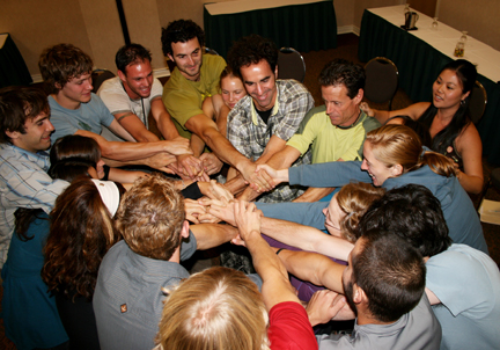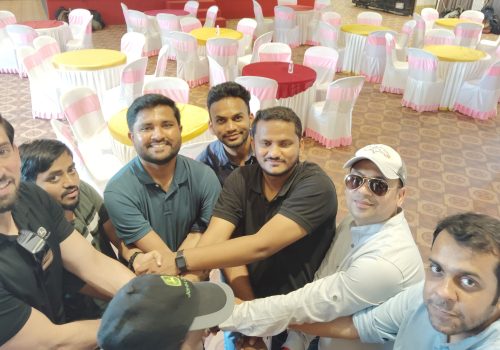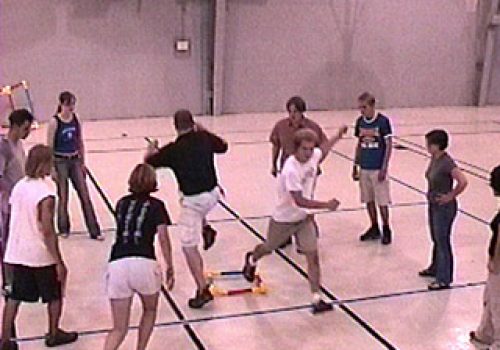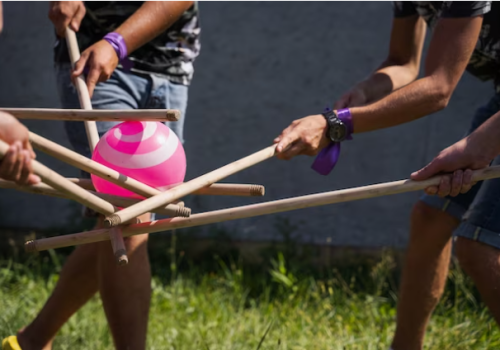Rope Football - Fostering team unity and behavioral growth
In the realm of team-building exercises, where camaraderie and collaboration are the cornerstones of success, innovative activities often emerge to challenge participants both physically and mentally. One such intriguing activity is “Rope Football.” This unique team-building exercise incorporates soccer, communication, and strategic thinking elements, making it an effective tool for enhancing teamwork, communication, and behavioral skills. By combining the excitement of sports with the nuances of team dynamics, Rope Football offers an engaging platform for participants to develop essential qualities that contribute to a cohesive and productive team.
Rope Football takes the traditional sport of soccer. It adds an innovative twist, where players not only rely on their skills but also effective communication, coordination, and cooperation with their partners. The game is played with a big-sized football or regular-sized ball, depending on the available space. Teams are divided into pairs, and each pair forms a two-person team. The objective is to score points by kicking the ball into the opponent’s goal while using three fit ropes.




Key Takeaways of Rope Football for Behavioral Training:
Communication: Rope Football emphasizes the importance of clear and efficient communication between teammates. As players maneuver the ball using ropes, they must coordinate their actions, discuss strategies, and adapt in real-time. This exercise enhances participants’ ability to convey their thoughts, listen actively, and make collective decisions under pressure.
Collaboration: Successful Rope Football requires seamless collaboration between teammates. Players must anticipate each other’s movements, synchronize their actions, and work together to advance the ball and score goals. This experience fosters a deeper understanding of the strengths and weaknesses of teammates, building a foundation of trust and cooperation.
Adaptability: Rope Football often presents unexpected challenges and changing situations, demanding quick thinking and adaptability. Participants learn to adjust their strategies, respond to the opposing team’s actions, and improvise under changing conditions. This adaptability translates to a more agile mindset in professional and personal contexts.
Leadership and Followership: Within each two-person team, leadership and followership roles emerge naturally. Players must assess their partner’s strengths, delegate responsibilities, and guide their team toward the common goal. This exercise encourages participants to both lead and support, enhancing their leadership and followership abilities.
Conflict Resolution: Rope Football offers a controlled environment to experience conflicts and disagreements. As players encounter challenges, they must resolve differences and find common ground to proceed effectively. This helps participants learn to manage conflicts constructively and find solutions through open communication.
Stress Management: The competitive nature of Rope Football can induce stress and pressure. Participants learn to manage their emotions, stay focused under stress, and channel their energy positively. These stress-management skills translate to improved performance in high-pressure situations.
Rope Football transcends traditional team-building activities by combining the thrill of soccer with the complexities of effective teamwork. Through promoting communication, collaboration, adaptability, leadership, conflict resolution, and stress management, this exercise serves as a powerful tool for behavioral training. By participating in Rope Football, teams not only elevate their ability to work together harmoniously but also equip themselves with valuable skills that extend far beyond the sports field.
Rope Football
- 10-500
- Low to Moderate
- In-Person
- 25-30 min
- Adaptability
- Collaboration
- Conflict Resolution
- Leadership and Followership

Similar Activities
- GROWING BETTER EVERY MINUTE
Get your Business
Right up There
Identifying the missing pieces in the organization or the fading magic of it or perhaps just a lack of acceptance of the same; one of these is enough to get any organization into the act. As it is been rightly said “Acceptance first step towards transformation.” You cannot change if you don’t know where to start and those around you!







